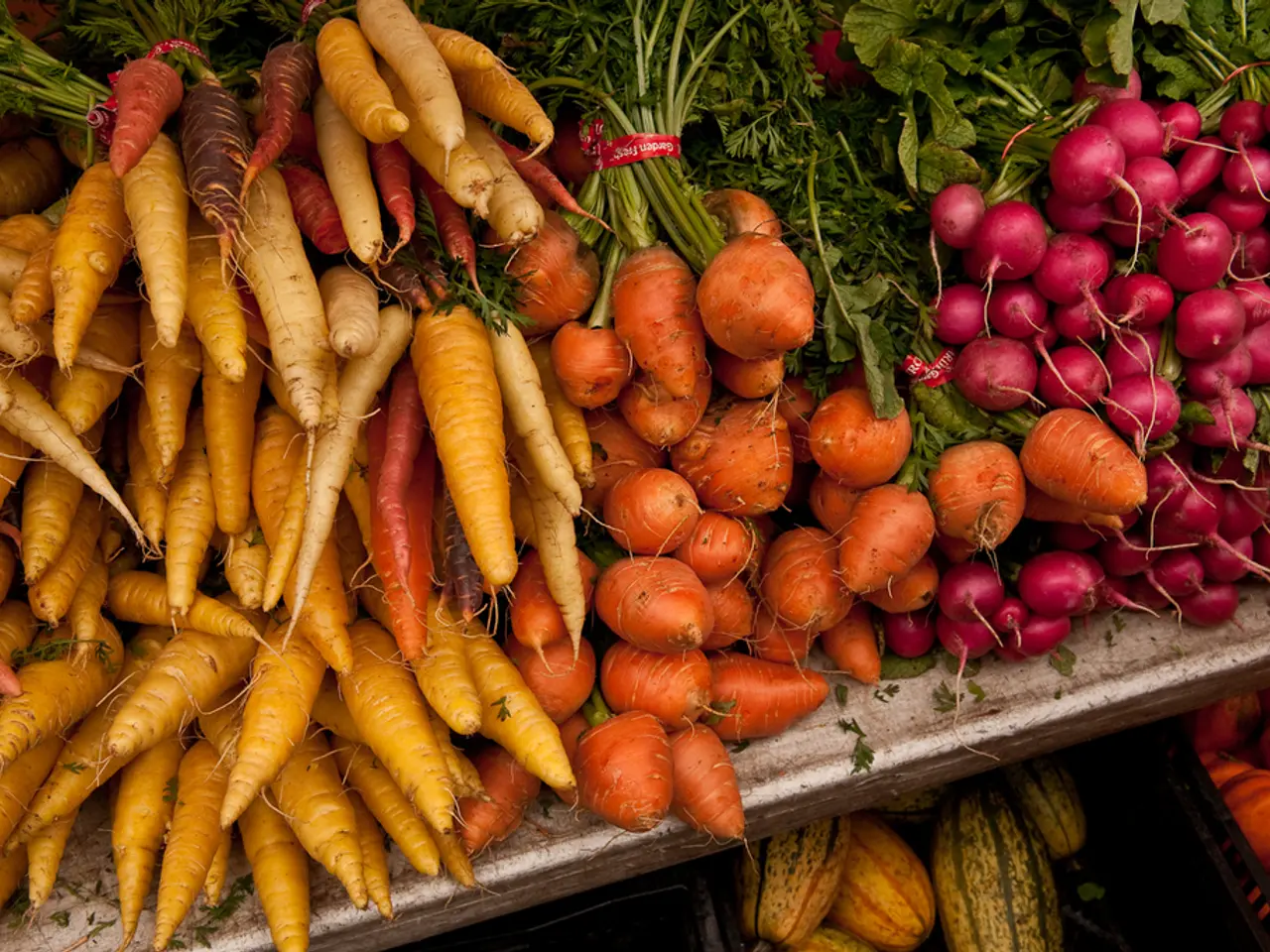Strategies for Eco-friendly Urban Vegetable Growth Breakdown
Starting a Community Garden: A Guide to Sustainable Urban Gardening
Community gardens are a wonderful way to bring people together, promote sustainable practices, and grow fresh produce in urban spaces. Here's a step-by-step guide on how to start a community garden, focusing on eco-friendly and sustainable methods.
Step 1: Planning The first step is to plan the garden, deciding what to grow. Consider the garden's location, size, and the variety of crops you'd like to plant. Remember, crop rotation can prevent pests and diseases from taking hold in the garden.
Step 2: Organizing Resources Next, organize resources such as tools, seeds, and soil. Good soil can hold moisture better, reducing the need for frequent watering, and a lively community of microbes breaks down organic matter, enriching the soil.
Step 3: Soil Health Management Maintaining soil health is crucial in urban vegetable gardens. Use organic matter such as compost and natural amendments to enrich soil fertility and structure. Employ cover cropping and mulching to prevent erosion and suppress weeds. Ensure proper drainage, especially in clay-heavy urban soils, to avoid compaction and waterlogging.
Step 4: Water Conservation Water conservation is important in sustainable urban gardening. Harvest rainwater through rooftop beds, raised planters, or rain barrels to reduce dependence on municipal water and minimize runoff. Implement efficient watering techniques such as drip irrigation and moisture monitoring to minimize water waste. Utilize green infrastructure that naturally retains stormwater, reducing flooding and helping groundwater recharge.
Step 5: Planting Once everything is ready, start planting. Remember, watering early in the morning or late in the evening helps reduce water evaporation and ensures plants get the moisture they need. Using a drip irrigation system delivers water directly to the roots of plants, saving water and keeping them healthy.
Step 6: Community Garden Initiatives Develop urban farms and edible green walls that engage residents and workplaces in local food production. Incorporate urban forestry and greening efforts by integrating trees and pollinator-friendly plants within or around vegetable gardens. Promote community collaboration on natural composting, companion planting, and organic practices. Engage in educational programs and shared garden spaces to raise awareness about sustainable practices, enhance urban biodiversity, and create social cohesion.
Benefits of Joining a Community Garden Community gardens offer numerous benefits. They provide opportunities to grow fresh produce, learn about gardening techniques and sustainable practices, promote physical activity through gardening tasks, contribute to mental well-being by reducing stress and promoting a calmer, happier state, and offer opportunities for community connection and making new friends.
Eco-friendly Gardening Techniques Eco-friendly gardening techniques can make a big difference in urban spaces. They focus on maintaining soil health, conserving water, and fostering community involvement to maximize environmental and social benefits. Sustainable practices for urban vegetable gardens are essential for growing food while being kind to the planet.
By following these steps and practices, you can create a resilient, productive, and ecologically beneficial urban vegetable garden that mitigates climate impacts, reduces resource consumption, and fosters vibrant community ecosystems. Happy gardening!
- In planning the garden, consider growing quality vegetables and fruits, focusing on their suitability for the garden's location, size, and your desired crop rotation schedule.
- Organic matter, like compost and natural amendments, plays a vital role in maintaining quality soil, enhancing its fertility and structure for sustainable gardening.
- Embrace healthy-cooking practices by selecting vegetables and fruits grown in your sustainable-living community garden, contributing to a produce-driven lifestyle and food-and-drink choices.
- Promote lifelong learning by engaging in educational programs and shared spaces that teach gardening techniques and sustainable practices, fostering an environment of learning and education-and-self-development.
- To follow a lifestyle of sustainable living, seek ways to conserve water through rainwater harvesting, drip irrigation, or other efficient watering techniques, ultimately reducing water waste in gardening.
- Gardening isn't just about plants; it also involves home-and-garden activities such as natural composting and gardening tasks that encourage physical activity and contribute to your overall well-being.
- Integrate learning experiences into your garden by introducing pollinator-friendly plants, urban forestry, and greening efforts, all of which support urban biodiversity and help create a supportive community ecosystem.




